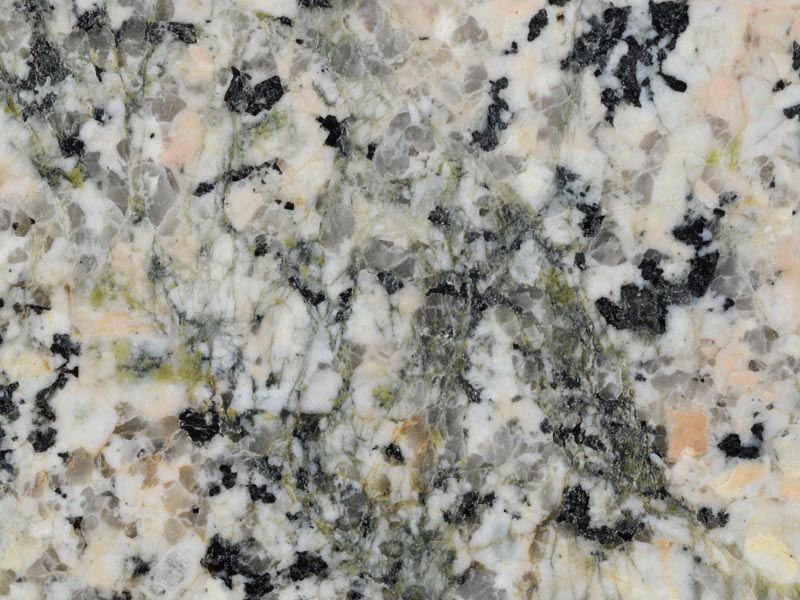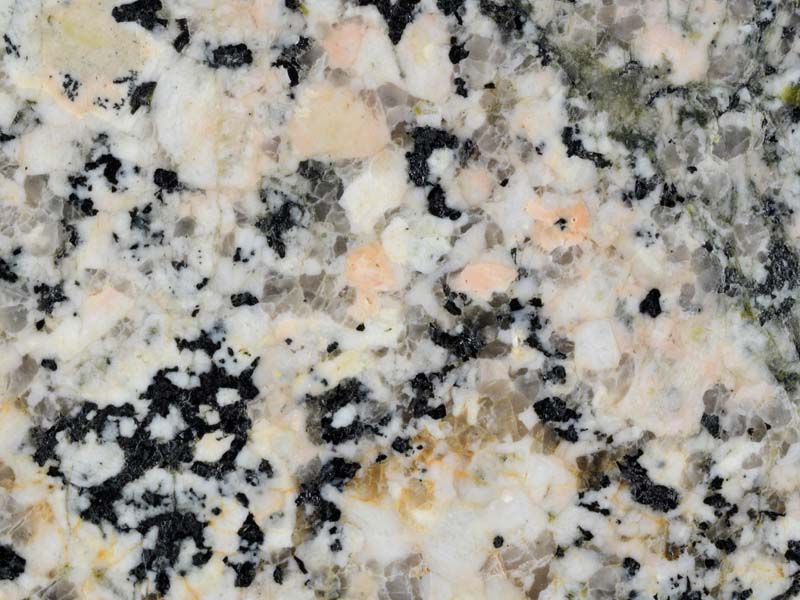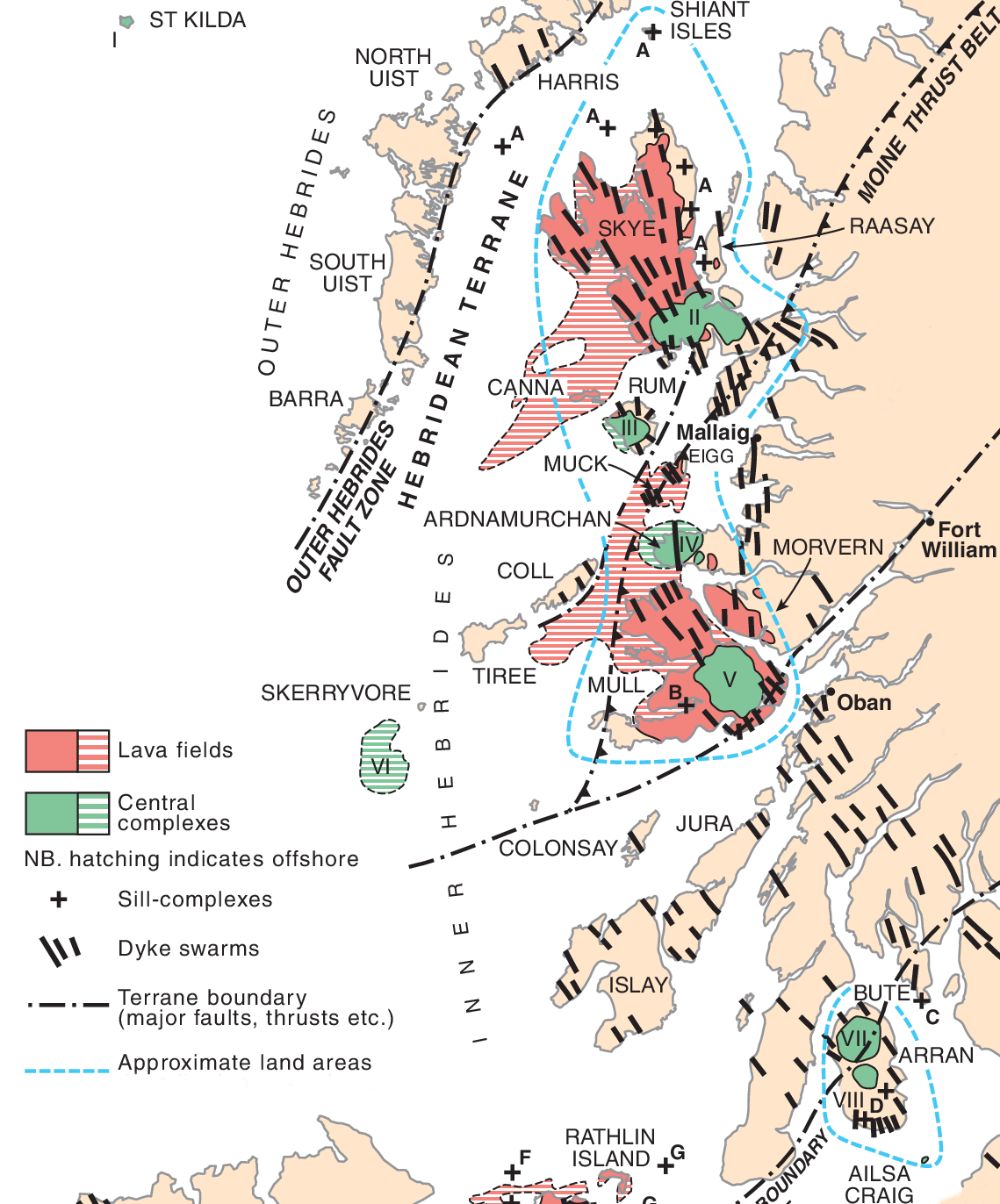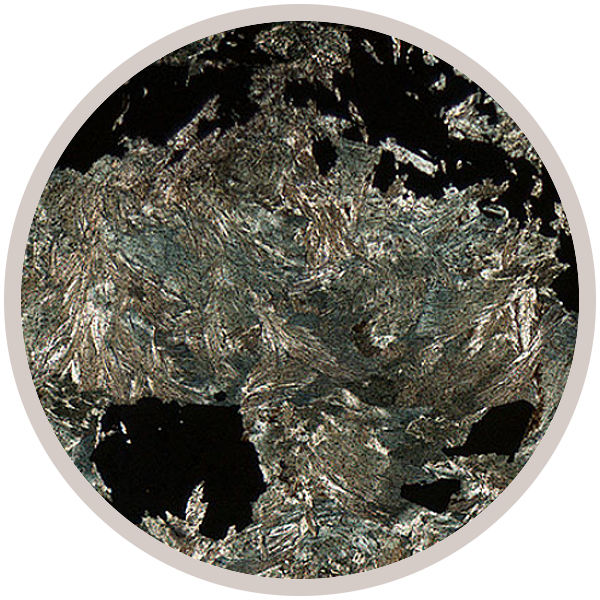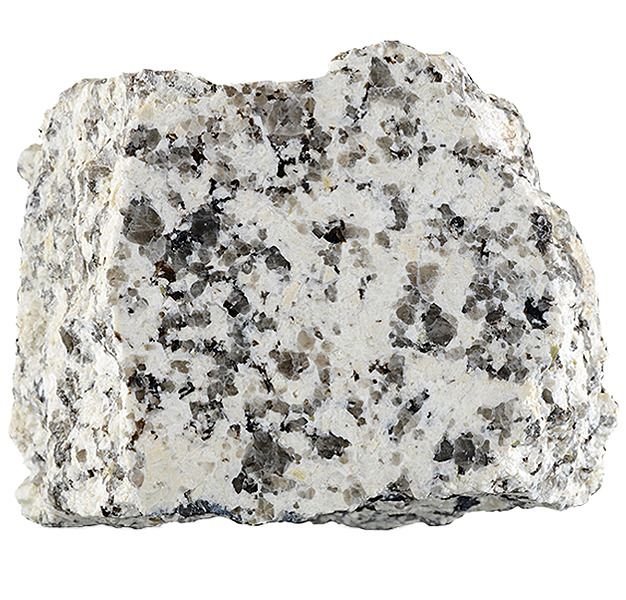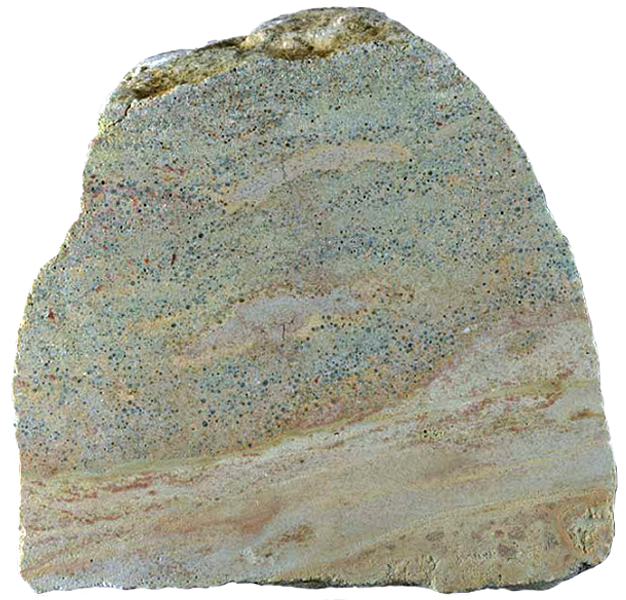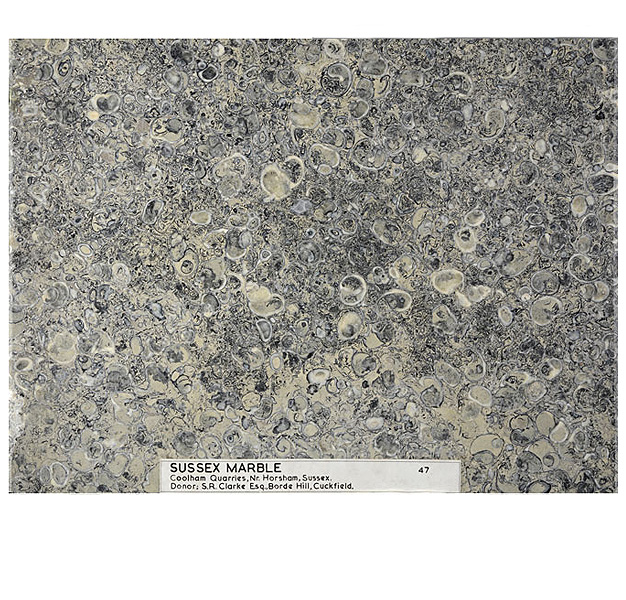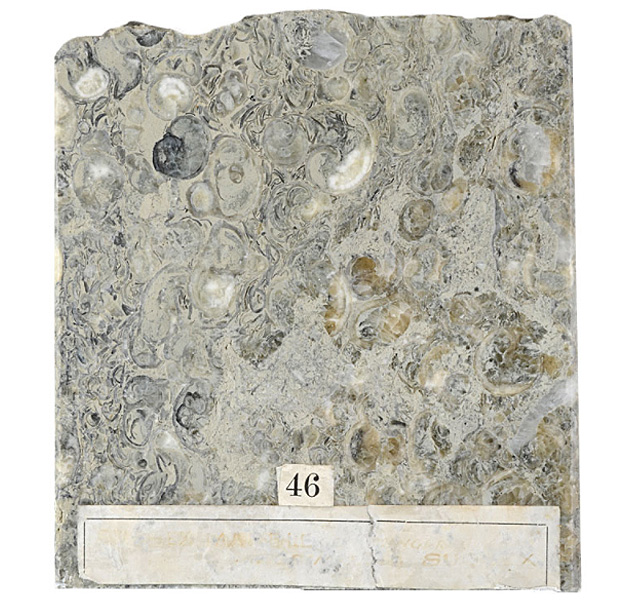
Fact sheet
This epigranite is from Loch Ainort on the Isle of Skye. It is mainly composed of quartz, alkali feldspar and plagioclase feldspar. The most common ferromagnesian mineral is ferrohedenbergite (a member of the amphibole group) - see rotation 1, together with Fe-Ti oxides, allanite, apatite and biotite. Secondary products include epidote and chlorite (replacing biotite) - see rotation 2.
The Loch Ainort epigranite is part of the Western Red Hills centre on the Isle of Skye. It occupies an area of 35 square km and comprises ten granites, a composite ring dyke, explosion breccia and a gabbros. The centre was emplaced into Paleogene lavas to the west, Torridonian and Mesozoic sedimentary rocks to the north, and granites of the Srath na Creitheach Centre to the south.
A good description of the mineralogy of the granites of Skye is here.
The term epigranite was introduced to distinguish the high-level granites of the British Palaeocene Volcanic Province from other, deeper-level granites such as those of Caledonian age in Scotland.
The United Kingdom Virtual Microscope (UKVM) collection consists of igneous, sedimentary and metamorphic rocks from around the UK.
It is intended as a teaching resource, helping to tell the story of the common rock types and how they form, and reflecting the history of the UK at the margins of the continent of Europe. The collection is a series of teaching sets, for example igneous rocks from the North Atlantic Igneous Province and SW England; high-temperature metamorphic rocks from Scotland and low-temperature metamorphic rocks from Wales; and sedimentary rocks, including English limestones and sandstones.
